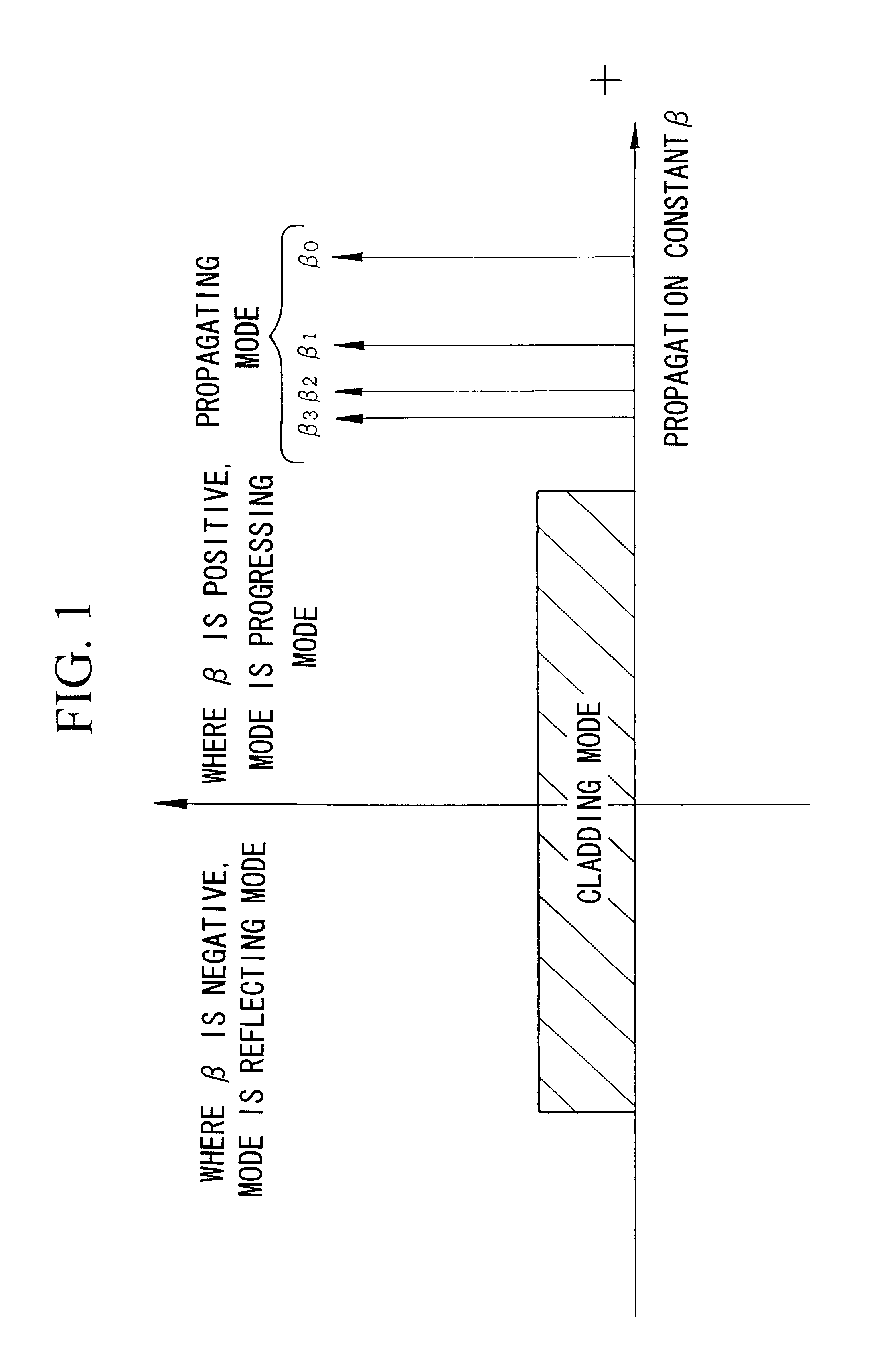Multimode optical fiber with a higher order mode removing function
a multi-mode optical fiber and function technology, applied in the field of multi-mode optical fibers, can solve the problems of not being able to meet the conditions of low-loss connection of plural optical fibers, the square root of the relative refractive index difference .delta..sup.1/2 cannot be increased, and the degree of freedom is increased
- Summary
- Abstract
- Description
- Claims
- Application Information
AI Technical Summary
Benefits of technology
Problems solved by technology
Method used
Image
Examples
example 1
FIG. 6 is a graph showing the results of a simulation of the relationship between the normalized propagation constant and the normalized frequency in the example of a multimode optical fiber having the step-refractive index distribution shown in FIG. 5(a). In this multimode optical fiber, the relative values of the refractive indices of center part 1a and stepped part 1b are 0.80 and 0.06 (units: %). When the radius of center part 1a is set to 1, then the radius of stepped part 1b is 5.
The upper limit VC11 for a normalized frequency within limits that permit elimination of LP mode propagation is around 8. In the case of a design that actively does not permit LP11 mode propagation, such as conventional designs, the limits for V must be smaller than the aforementioned. Thus, freedom of design is extremely narrow. In contrast, by applying the present invention, a design is possible within the range of from 8 to 15 approximately, where the LP02 mode, which is the third mode, is generate...
examples 2 , 3
Examples 2, 3
FIGS. 10 and 11 are graphs showing the results for a simulation of the relationship between the normalized propagation constant bmn and the normalized frequency V of the multimode optical fibers from Examples 2 and 3 respectively.
As shown in their respective graphs, Examples 2 and 3 are provided with the step-refractive index distribution shown in FIG. 5(a).
In Example 2, the relative refractive indices of center part 1a and stepped part 1b based on the refractive index of the cladding are 0.80% and 0.08% respectively. These values are 0.80% and 0.12% respectively in Example 3. In addition, when the radius of center part 1a is 1, then the radius of stepped part 1b is 5 in the case of both Examples 2 and 3.
example 4
FIG. 12 is a graph showing results for a simulation of the relationship between the normalized propagation constant bmn and the normalized frequency V of the multimode optical fiber of Example 4.
As shown in this graph, the multimode optical fiber of Example 4 is provided with the refractive index distribution shown in FIG. 5(e). The relative refractive indices of center part 5a, ring part 5c and cladding 11 based on the refractive index of intermediate part 5b are 0.61%, 0.31% and 0.02% respectively. In addition, when the radius of center part 5a is 1, then the radius of intermediate part 5b is 2.8 and the radius of ring part 5c is 3.9.
PUM
 Login to View More
Login to View More Abstract
Description
Claims
Application Information
 Login to View More
Login to View More - R&D
- Intellectual Property
- Life Sciences
- Materials
- Tech Scout
- Unparalleled Data Quality
- Higher Quality Content
- 60% Fewer Hallucinations
Browse by: Latest US Patents, China's latest patents, Technical Efficacy Thesaurus, Application Domain, Technology Topic, Popular Technical Reports.
© 2025 PatSnap. All rights reserved.Legal|Privacy policy|Modern Slavery Act Transparency Statement|Sitemap|About US| Contact US: help@patsnap.com



